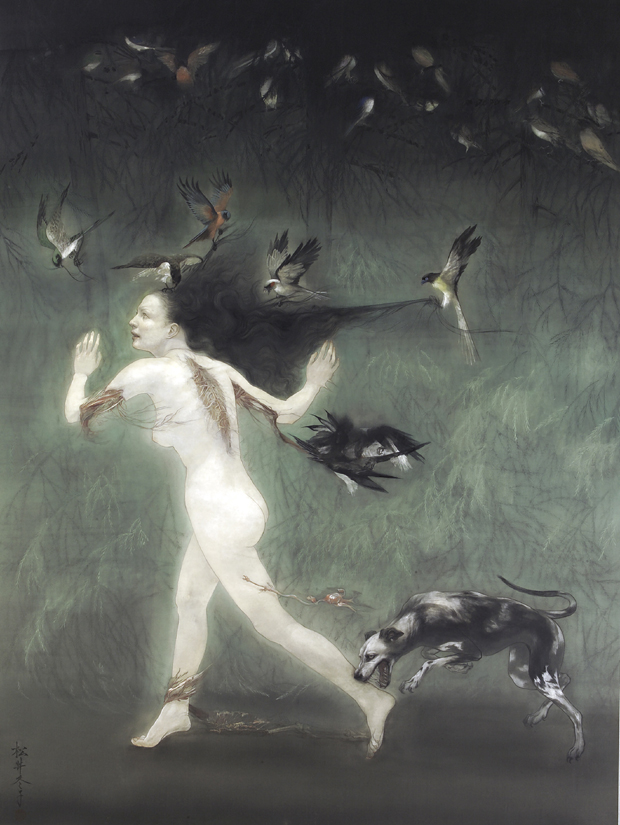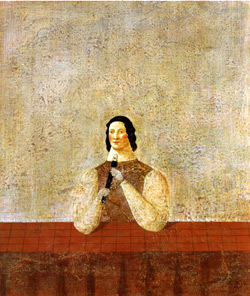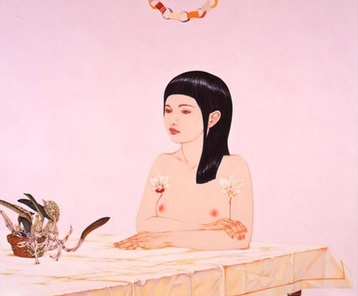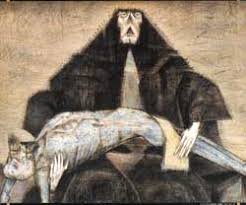Among the painters
working in Japan, introduce my favorite people. Among them, there are
painters who gained fame as a landlord in Japan, some painters close to
the unknown. What is common is that the painters who created the situation
peculiar to Japan as described below. Japan converted from
a modern feudal system to a modern state by a coup called the 1868 Meiji
Restoration. It was the Western European countries that Japan's leaders at
the time used as a model of policy. They tried to greedily absorb the
system and science and technology of the Western countries which had held
hegemony in the world at the time. Following them, the Japanese people
made an effort to absorb the things of Western countries by themselves. At
that time, the Japanese carried out functionally. In other words, I
actively learned the convenience such as technology and institution by
consciously avoiding learning Western culture, history and thought deeply.
Even if Japanese learn culture or thought, it was limited to functional
aspects like economic and political strategies and efficiency. And they
also learned painting techniques in Western Europe. For decades after the
Meiji Restoration, the top Japanese painters had studied in Paris and
brought back advanced techniques and paints. When they studied abroad,
they learned the latest trends of the time and brought it to Japan. A
painter brings academic paintings and another painter brought back
Impressionist techniques after a few years. As a result, Japanese painters
received academism, Impressionism, Romanticism, or both concrete painting
and abstract painting, separated from the historical background and
cultural background, as if they were on display of supermarket shelves. On
the other hand, painters of traditional paintings were urged to undergo
major reforms with the Meiji Restoration in mind. originally. There was no
concept of painting art in Western Europe in Japan. In Japan until then,
paintings were manufactured as a commodity for entertainment for commoners
and crafts as loyalty for samurai and aristocrats. Ukiyo-e, which is
mass-produced for commoners, is representative. Yamato for samurai and
aristocrats and ink painting for temples. As a painting, these were never
summarized in one word. However, after the Meiji Restoration, as paintings
gathered from Western Europe to Japan like a tsunami, each one is only a
small wave, Ukiyoe, Yamato and ink paintings seemed to be included only in
the tsunami. In other words, these Japanese paintings were in danger of
survival. To that crisis, there are people who caused the movement of
Japanese painting. At that point Japan's original painting art was born.
In other words, the Japanese gathered in the function of each traditional
painting as well as the functional absorption of Western
paintings. And, among painters born after the 20th century, they received such a situation as a matter of course, and unique painters who made use of it were born. They sometimes make work of ideas that can not be thought of in the Western tradition as easily as they do with the movement of various paintings displayed on the shelves. For example, as a result of being influenced by Piero della Francesca, there was a painter who painted a painting like an animated character. Also, although it is a concrete picture for the time being, there is no idea of copying the target, so there was also a painter whose idea was abstract painting. Also, some painters passed the reality that supposedly it was a realism pursuing realism. There were also painters who created work of era anecdotes without any commitment. Their paintings do not fall under the genre of painting art in Europe. I would like to introduce my painters amongst such artists, especially here.
Toshio Arimoto was a Japanese painter
who was born in 1946 and died at the age of 38 in 1985. His work
period as a painter was relatively short, about 10 years, but he
produced works of style that was completed from the beginning. The
impression that we saw his work is not to strongly assert emotions
and philosophies, but to keep comforting what we see modestly is
simple. Masako Ando was born in 1976 and is a currently active
painter. The motif of her paintings are living creatures such as
children, animals, insects, and flowers. She depicts this phenomenon
with precision by observing such motifs finely every
corner. Jiro Oyamada was a Japanese painter who was born in
1914 and died at the age of 77 in 1991. Oyamada's painting attracts
those who see glimpses of humor and kindness at times, even in
surprising force. A strange creature staring at here from the dark.
Or, the world of fantasy emerging in fresh
colors. |




